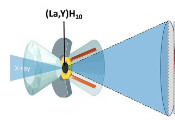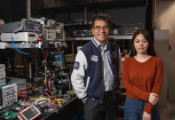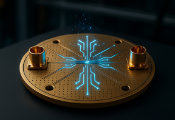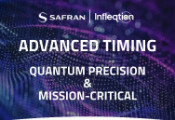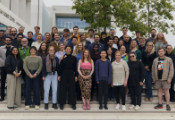Quantum Breakthrough: Proof of Wavefunction Collapse on Superconducting Quantum Computer Supports Penrose-Hameroff Consciousness Theory
NEW YORK, April 03, 2025 -- Scientists at Valis Corporation have demonstrated gravitationally induced wavefunction collapse on an IBM Eagle quantum chip and will present their findings at Deep Tech Week, New York. Their results are consistent with the Penrose-Hameroff theory of Orchestrated Objective Reduction (Orch-OR) – an explanation for human consciousness. The Penrose theory is one of the many competing proposals that solve the famous physics paradox of Schrödinger's Cat.
One of the most important paradoxes in physics is Schrödinger's Cat. At the microscopic level, light and particles behave according to quantum mechanics. This allows them to be in two places at once (superposition), coordinate their behavior instantaneously across vast distances (entanglement), and exhibit interference patterns. We see evidence of this with the naked eye when we look at the colored films on puddles of oily water. But we never see any large object – such as a cat – in two places at once. Why?
Schrödinger's famous thought experiment involves a cat in a sealed box with a radioactive sample and poison. Radioactive decay—a quantum event—triggers the release of the poison, killing the cat. Quantum mechanics says the cat is simultaneously alive and dead. Schrödinger thought this was absurd and meant quantum mechanics was incomplete. Einstein agreed.
Physicists have proposed many solutions to this puzzle, including that there is never a collapse and, instead, a new Universe is spawned every time a particle is in two places at once. This is called the 'many worlds' theory and is the origin of numerous science fiction plots. But, Sir Roger Penrose, the Nobel Laureate, thinks this is far-fetched and proposes a simpler solution.
Penrose realized that cats or any similar large objects would bend space-time in two different ways if they were simultaneously alive and dead. Quantum mechanics allows this, but Einstein's General Relativity does not. Thus, we have another paradox, and the solution solves Schrödinger's paradox. When the Universe bends too much – technically above the Heisenberg uncertainty limit – it snaps to one or other configuration, and the cat lives or dies.
One of the features of the Penrose-Hameroff theory is that it can be tested with real quantum devices coupled to large objects. In the Valis experiment, the quantum device is a single bit on an IBM Eagle chip, and the large device is the microwave control system that connects the qubits to the real world. These usually allow scientists to see what is happening inside the machine, but they have a significant mass and can be co-opted into testing gravitational collapse. A test is then set up to see whether the system collapses. We duplicate Schrödinger's thought experiment using modern quantum hardware.
The code for the test is too complex for a human to build alone in a reasonable time frame, but using modern LLMs, it was possible to rapidly iterate to a quantum program that will solve the problem. The final system is remarkably simple but resulted from many attempts made possible by using natural language descriptions of the science to guide program creation. The program and test system are implemented using IBM's Qiskit quantum operating system, and several LLMs were used in parallel to solve the problem, including OpenAI's ChatGPT 4.5, Claude Sonnet 3.7 & Code, Google's Gemini 2.5, xAI's Grok 3, and IBM's Granite-Qiskit running locally. The test ran on the public IBM quantum platform, and a GitHub repository will be available shortly. "We think a new era of AI-assisted Science is unfolding," said James Tagg.
Does this mean IBM Quantum chips are conscious? This is a hard question to answer, as over 400 competing definitions of consciousness exist. According to the Penrose Hameroff definition, it would make IBM computers proto-conscious. They have the necessary capability to become conscious, but they still need to be orchestrated to achieve consciousness.




